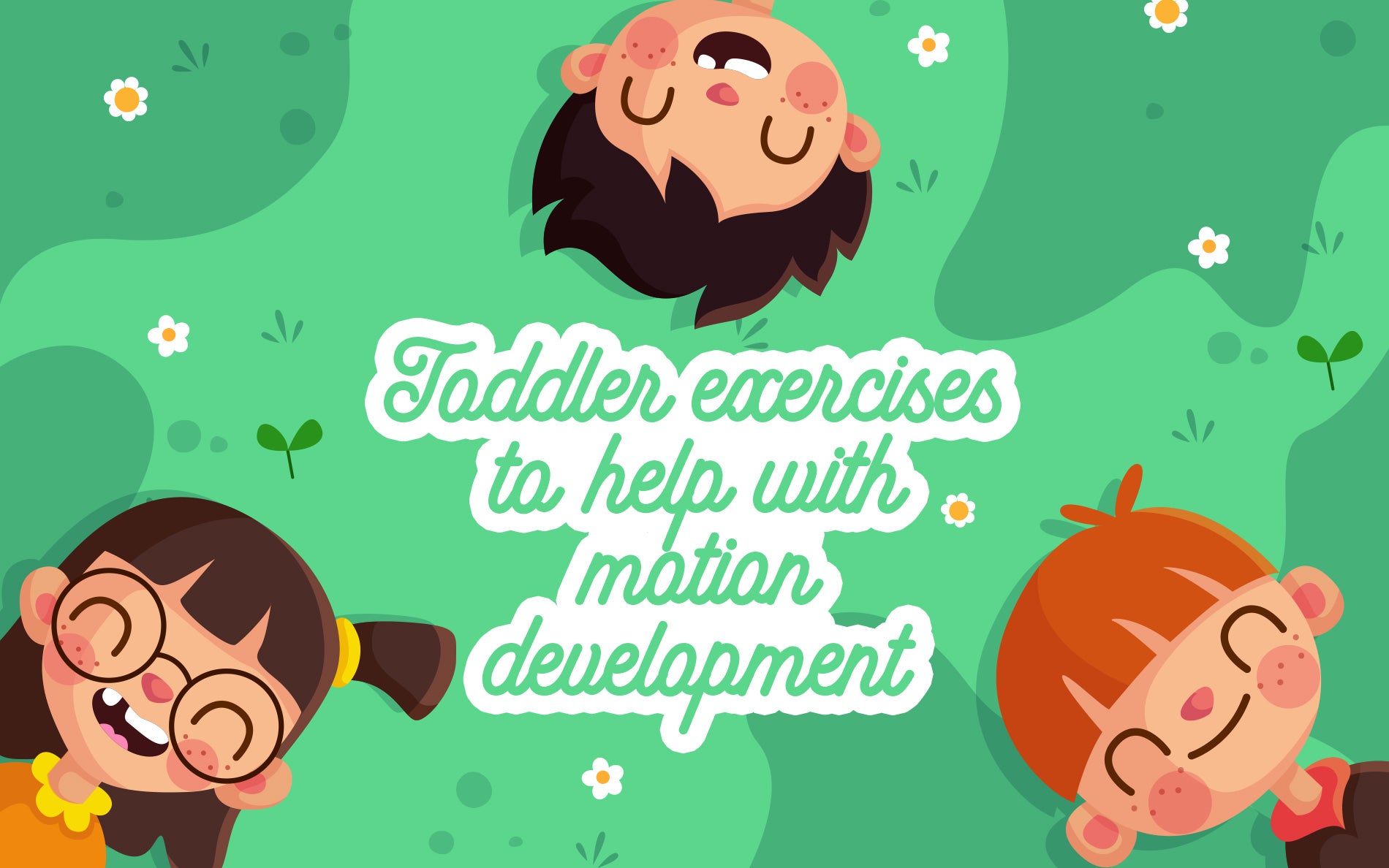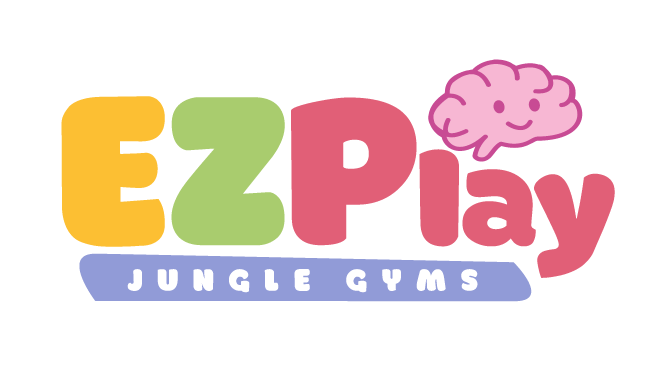
Toddler Exercises to Help with Motion Development

Getting children to start being active at a young age is so important. The sooner they make physical activity a habit, the better off they will be in the long run. Unless they are sleeping, toddlers shouldn’t be inactive for more than one hour at a time. Most young children and toddlers are naturally quite active, so you probably couldn’t keep them still if you tried! However, if your child needs some help in this department, there are ways you can encourage them to move their bodies that will help with motion development as they grow.
Toddlers are too young for organized sports, and developmentally they are still lacking in many of the areas they would need to play a sport, anyway. At this age, it is best to make exercise seem fun but it should also help them develop the motion skills they will need later on in life. This may seem like a daunting task, but don’t worry. Here we have put together a list of several tips to help develop your toddler’s motion skills.
Before you get started, take some time to review any safety hazards for a toddler both inside and outside your home. What objects are being kept at baby-height that need to be moved? Are there any sharp corners that need to be covered? Don’t forget to keep an eye out for electrical cords and plugs, as well. Free play is important for a child’s development, but we want to make sure kids are safe while they are playing.

Engage in active play
For babies and toddlers, playing is how they learn all the motion skills that will be important for their development. Active, free play is essential for toddlers and young children. Encourage your child to move while they’re playing rather than letting them sit still all the time. Try to avoid leaving them in play seats or chairs, since these can limit their mobility and slow the progress of their natural development. Consider baby proofing a small area in your home where your toddler can play without worry.
Some children are into rough-and-tumble play, wrestling with their older siblings or climbing all over mom and dad. As long as they are being carefully watched and not in a dangerous situation, this kind of play can actually help with motion development. Parent and child tumbling classes are another great way to engage in active play with your toddler.
You should also consider finding an indoor playset or other types of toddler playground equipment for them to use. There are plenty of options so you are sure to find one that fits your space and budget.
Indoor jungle gyms are very helpful in developing good sports habits. Climbing on play equipment geared specifically toward toddlers is another great way to teach your child how their bodies work and help them to develop motion skills. Toddler swings and toddler slides are fun for kids so they won’t even realize they’re learning new things as they play. They will be using their brain as well as multiple body parts, which makes this a very effective choice for motion development in toddlers. Even if your toddler is too little to really enjoy a kids jungle gym, they can watch older children play and eventually they will want to mimic them.
Music is also a great tool to encourage toddlers to move. Put on their favorite songs and dance or see if you can find a baby and me music class in your area. Encourage them to wiggle and move like you are. Emulate the motions you want them to make. They will probably copy you! Getting down on the ground with your child is a good way to make them feel safe and supported and create an environment where they will be more likely to explore. Exploration and curiosity are the sparks kids sometimes need to entice them to move in new ways.

Practice squatting and standing
Have your toddler practice sitting and standing by placing toys on the ground out of their reach when they are standing up and having them bend down to reach them, or vice versa if the child is sitting. Hanging toys off the top railing of a crib is a great way to encourage your child to pull themselves up to standing in order to reach the toy. Being able to pull themselves into a standing position is a great milestone on the way to independent walking.
While your child is holding on to something, place a toy or stuffed animal on the floor below them so they have to squat down to pick it up. Ask them to pick up a toy and put it on a table or chair that is high enough that they will have to pull themselves up to place it there. All the up and down motion will help those little toddler legs get strong and get your little one more familiar with these advanced body movements.

Use toys thoughtfully
Balls or other toys that roll or move are great tools to get a reluctant toddler moving. Rolling a ball back and forth can teach cause and effect as well as build fine motor skills. If your toddler is a bit older or has more developed movement abilities, have them try putting the ball in a basket or tossing it through a hoop.
Building with blocks or other stacking toys is another great way to work on fine motor skills with your toddler. This can help them learn sequences, how to put things inside or on top off each other, and how to put things together and take them apart. These tiny movements may not seem like a lot, but fine motor skills are linked to cognitive development. The concentration and hand movement needed to stack those blocks is helping your child develop the cognitive skills they will need for bigger movements later on - like climbing a ladder, opening and closing doors, or throwing a ball.
You don’t need to go out and buy fancy toys or equipment for your toddler, either. Homemade toddler play sets are a clever way to make use of things you already own in order to create a fun indoor jungle gym for your little one. Using boxes, pillows, and blankets, create an obstacle course full of things for your child to climb, crawl, and walk over and through.

Practice walking
As your toddler gets a bit older, their motion skills will become more advanced. Soon, they’ll even be taking their first steps. Once you have a walker on your hands they’ll probably never want to stay still! But if your toddler has not quite developed the motion of walking, you can help encourage them using a few easy tips.
Walkers can be a nice supplement for when your toddler is learning to walk, but using them too much won’t help your child develop the strength needed for them to walk on their own. Toys they can stand behind and push are a better option, since they encourage toddlers to learn to walk independently. If you don’t have a push toy, try an overturned laundry basket on a carpet or a dining chair on a hard floor. Just make sure you are supervising and providing resistance on the object if necessary to keep it from sliding away from baby too quickly.
Once your toddler is a bit more steady on their feet, you can hold their hands for support while they walk or see if they will go from holding on to a wall or piece of furniture in order to walk a short distance to reach you. The more time your baby spends learning to support their own weight using their legs and feed, the more confident they will become in their own ability to walk. Soon enough, they will be taking their first solo steps!

Ride along
Ride on toys are also great for this age group as they are working on motion development. Toys your child can sit on and push themselves with their feet are great for developing balancing skills and core strength. Once they have mastered those type of toys, balance bikes, scooters, and tricycles can can help toddlers learn how to move different parts of their body at the same time. Not to mention these things count as physical activity, which is essential for a growing and developing child.
Helping your child with their motion development skills can be a lot of fun. There are plenty of resources and equipment you can get that will assist you, as well. If you’d like to find more information about why you should consider an indoor playset for your toddler, check out our article.
Remember that all children develop at their own pace, however. Do not force your child to learn a new skill before they are ready. Provide them the opportunity to learn and let them take it from there. If you have concerns that your toddler is not developing at an appropriate pace, you should check in with your child’s pediatrician. And don't forget that all the process of education has to be FUN!








